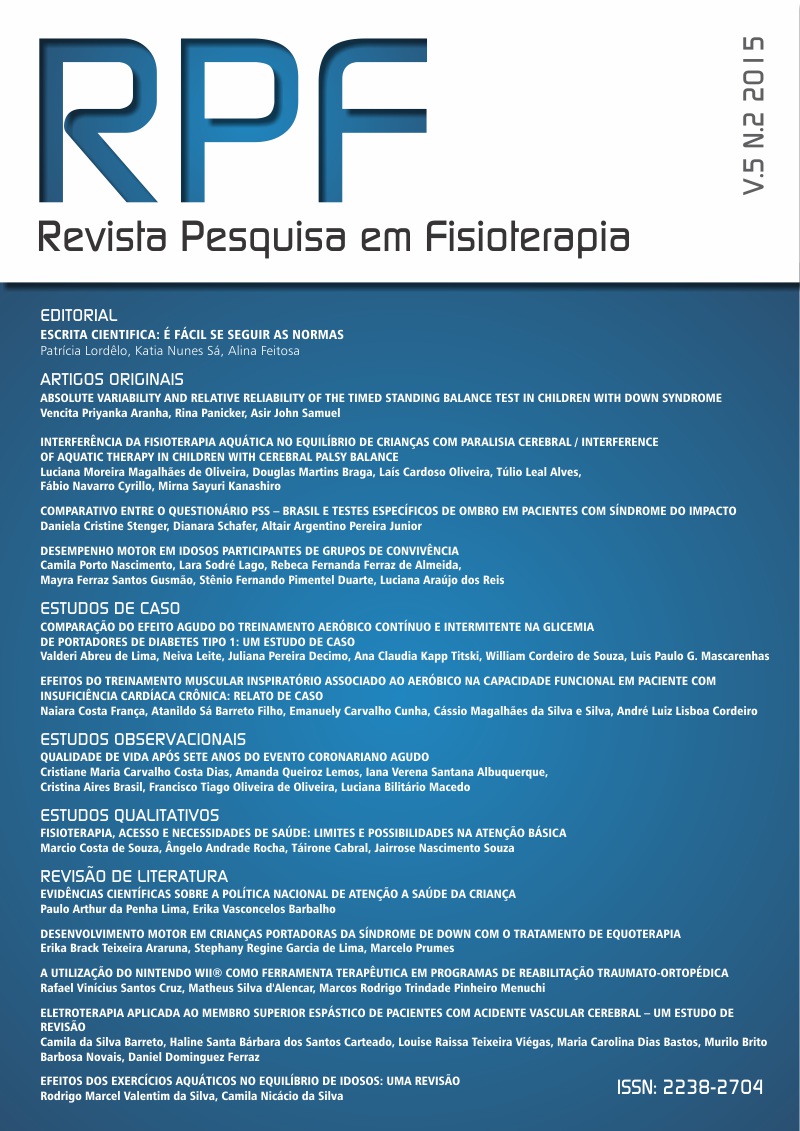ELETROTERAPIA APLICADA AO MEMBRO SUPERIOR ESPÁSTICO DE PACIENTES COM ACIDENTE VASCULAR CEREBRAL – UM ESTUDO DE REVISÃO
DOI:
https://doi.org/10.17267/2238-2704rpf.v5i2.585Palavras-chave:
Espasticidade Muscular, Modalidades de Fisioterapia, Acidente Vascular Cerebral, Terapia por Estimulação ElétricaResumo
Introdução: A espasticidade é uma alteração do tônus muscular secundaria a uma lesão do neurônio motor superior geralmente decorrente de um distúrbio vascular cerebral. A estimulação elétrica neuromuscular vem sendo utilizada pelos fisioterapeutas com o objetivo de reduzir a espasticidade, melhorar a capacidade motora e o desempenho na realização das atividades de vida diária. Objetivo: Apresentar os efeitos da aplicação de estímulos elétricos neuromusculares sobre os músculos espásticos do membro superior de pacientes com sequelas de Acidente Vascular Cerebral (AVC). Metodologia: O estudo utilizou o protocolo de orientações do PRISMA para a elaboração da revisão sistemática. A busca bibliográfica foi realizada no período entre dezembro de 2014 e março de 2015 nas bases de dados: MedLine/PubMed, PEDro, LILACS e Scielo. Foram utilizados os seguintes descritores: Espasticidade, Muscle Spasticity, Fisioterapia e Physical Therapy Modalities. Resultados: Foram selecionados 6 estudos. As pesquisas mostram uma redução significativa da espasticidade em músculos do membro superior espástico de pacientes com sequelas de AVC, tratados com eletroestimulação muscular. Outros resultados também foram encontrados, como a redução da dor e da contratura muscular, a melhora da função motora dos membros superiores e o aumento da amplitude de movimento ativa de punho e dedos. Não existe consenso entre os parâmetros de aplicação do tratamento com eletroterapia. Conclusão: Os estudos mostram que a eletroterapia, aplicada ao membro superior espástico do paciente com sequelas de AVC, parece contribuir para a redução da espasticidade, melhora das complicações associadas e incremento da capacidade funcional. Porém, ainda é baixa a qualidade metodológica dos estudos e reduzido o número de artigos sobre o tema.



